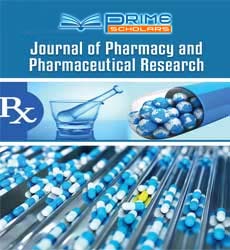Research Article - (2023) Volume 7, Issue 2
Biogenic Synthesis of Cadmium Sulfide Nanoparticles Using Daruharidra (Berberis aristata) and Its Implementation as a Novel Therapeutic Agent against Human Breast and Ovarian Cancer
Aditi Bhatnagar and
Abha Mishra*
Department of Biochemical Engineering, Indian Institute of Technology, Varanasi, Uttar Pradesh, India
*Correspondence:
Abha Mishra, Department of Biochemical Engineering, Indian Institute of Technology, Varanasi, Uttar Pradesh,
India,
Email:
Received: 21-Nov-2022, Manuscript No. IPIPR-22-14900;
Editor assigned: 23-Nov-2022, Pre QC No. IPIPR-22-14900 (PQ);
Reviewed: 07-Dec-2022, QC No. IPIPR-22-14900;
Revised: 01-Feb-2023, Manuscript No. IPIPR-22-14900 (R);
Published:
08-Feb-2023, DOI: 10.21767/IPIPR.23.7.012
Abstract
In this article we have illustrated a novel biogenic and green approach for the production of CdS
Nanoparticles (CdS NPs) within 3 nm-5 nm range using an excellent ayurvedic herb known as
Daruharidra (Berberis aristata). Natural and chemical free daruharidra powder was utilized as a
stabilizing agent in the green or biogenic synthesis of CdS based nano formulation. The foremost
objective of this study was to explore prospects of these nanoparticles as a potent anticancer agent.
Human ovarian teratocarcinoma cells (PA1) and human breast cancer cells (MDAMB-231) were tested
against these nanoparticles. Analysis by MTT assay showed cytotoxic effect on cell lines when treated
with increasing concentration of NPs. IC50 for 24 hour treatment was obtained as 97.34 μg/ml
and 809.75 μg/ml for ovarian and breast cancer cells respectively. Further the flow cytometry
analysis were performed to understand the apoptosis and cell cycle arrest mechanism. It was
found that treatment with CdS NPs lead to significant rise in early apoptotic cells i.e. from 2.53% to
13.5% and 3.67% to 12.6% in PA1 and MDAMB-231 cell line respectively. Also the NPs initiate the cell
cycle arrest in G2/M phase with subG1 DNA damage in PA1 cells and G0/G1 arrest in MDAMB-231
cells. The NPs were also tested for their potential as bactericidal agent, which showed excellent
results against both gram positive and negative bacteria.
Keywords
Cadmium sulfide; Nanoparticles; PA1; MDAMB-231; Anticancer; Herbal medici
Introduction
All over the world the major leading cause of death is cancer;
in 2012, there were approximately 14 M new cases of the
disease, which is estimated to be 8.2 M deaths worldwide.
The united states alone spent 147 billion $ on cancer care in
2017, which is likely to increase because of an exponential
increase in new cases with each passing year. Ancient
ayurvedic samhitas have mentioned some treatment
strategies for cancer. Traditional herbs used to target cancer in various parts of the body have always been in our
scriptures. Major cancer targeting drugs present in the
market are mostly derived from herbs and plants.
Herbs play a paramount role in chemoprevention and are
recognized as the origin of naturally occurring
antioxidants. They prevent cells from lipid peroxidation
and diseases resulting from it, one of them being
cancer. A known syndrome is observed during cancer, which is significantly managed by herbal remedies. This
syndrome is a cancer cachexia syndrome that involves
metabolic changes and immune responses due to any tumor
growth in the body. The syndrome includes anorexia,
chronic nausea, and other changes in body image. Herbs
used in cancer treatment result in reducing the side effects
of the syndrome and cancer-associated complications
without the use of any other extra medication. It was found
that herbal diterpenoid Pseudolaric Acid B (PAB) was
potent against the more toxic compound triptolide in the
apoptosis and growth of cancerous colon cells. The herbal
extract of the brucea and psoralea plant help in treating
carcinomas of the cervix, rectum, liver, colon,
leukoderma, and much more. Brucea extract, when applied
topically on tumors, has the potential to kill tumor cells.
Psoralen causes unspecific membrane damage by binding to
DNA and causing apoptosis. In the medicaments of various
diseases, including cancer, daruharidra comprises many
compounds explored as leads. In the past also, many plantacquired
products have been used for anticancer therapy,
such as taxol, vinblastine, vincristine, teniposide, etc. For any
plant with anti-carcinogenic abilities, it could be mere
serendipity or some very high level of ethno-pharmacological
screening. In the fields of biochemistry, for the discovery of
leads in cancer treatment, Daruharidra extracts in recent
years are being explored. Chromatography techniques enable
researchers to find hits in any plant extracts that could be
used as an anti-carcinogen or anti-tumorigenic agent in many
cell lines. The two main active compounds specific to
daruharidra or Berberis species that can be utilized as leads
for developing numerous drugs are berberine and berbamine.
Daruharidra is an ayurvedic plant from the scriptures which
should not be forgotten; instead, it should be brought back to
the present medicine industry as a potent plant that can solve
many mysteries of untreatable diseases. In the contemporary
world, many young scientists are focusing their work on herbs
and plants that can decipher the knot of cancer from the
world. Studies suggest using daruharidra in various cancerous
cell lines and have shown positive results. This article focuses
on Berberis sp, thus summarizing various researchers'
valuable work on the effects of its extracts and active
phytochemicals against cancer. There is innumerable evidence
of the protective effects of herbs and plant species working
effectively again several types of cancer. The cytotoxic effects
of anticancer medication used nowadays affect the receiver
and the front-line doctors; this article discusses the analytical
methods that can be used as a natural remedy in cancer
treatment. Berberis sp.'s potential to target cancer has been
discussed that relates to the underlying mechanism of its
action. Berberidaceae family consists of many antioxidants,
alkaloids, and other phytoceuticals that have shown
incredible results in the apoptosis of cells. It helps reduce free
radicals and treat other complications occurring during
cancer. Berberis sp. extracts are believed to have shown
immunoprotective effects in vitro that helps in the prevention
of damage due to drugs by its high antioxidant abilities. This
study encourages researchers to build a perspective for the
withering of life threatening aspects of cancer using natural
remedies. The plant carries chemical constituents like berberine, berbamine, oxyberberine, aromoline, palmatine,
oxyacanthine, karachine, and taxilamine which helps in
targeting cancer in their unique ways. Berbamine, a critical
constituent, was found to have IC50 values as low as 1.67
mg/mL, which reduced liver cancer by up to 70%. Berbamine
belongs to the bisbenzylisoquinoline group of alkaloids. Many
plants belonging to the Berberis genus and reported to
contain berbamine are utilized in traditional Chinese medicine
and ayurveda.
Cadmium Sulfide (CdS) belongs to the semiconductor
nanoparticles' II-VI group. Due to quantum captivity, these
nanoparticles have one of kind optoelectronic properties that
significantly differ from the bulk material. These nanoparticles
having low-dimensional semiconductor properties are
receiving significant attention in cancer treatment. Targeted
drug delivery is major concern in cancer nanotechnology.
Nano-composed therapeutics is now budding candidates to
treat several diseases. Biological treatment imposes precise
and targeted drug delivery and shut out side effects
originating from the systemic distribution of chemicals from
cytotoxic drugs it is found to effectively control cancer cell
proliferation and/or tumor angiogenesis. In a standard
practice CdS NPs are made from chemical synthesis which is a
tricky and cost intensive process requiring synthetic toxic
chemicals and several down streaming steps. Therefore, out
of ordinary approaches are required in this area to allow
synthesis utilizing non-hazardous materials while maintaining
the nano size, physicochemical properties, lower cytotoxicity,
and biocompatibility. In relation to this, nanoparticles derived via biogenic synthesis using biosurfactants (microbes and
plants) are a promising approach. Recent research on CdS NPs
derived from biological stabilizing agents reveal exceptional
quantum confinement effect having elevated photo emission,
and eminent antibacterial activity. The chief upper hand of
the biogenic synthesis method is that non-toxic compounds
from plant and microbial extracts are used as a stabilizing
agent to govern the particle range of the CdS NPs. It is much
effective in a way as it does not incite any major damage to
the cells.
In this article we discuss an off-center, swift and green
approach to synthesizing cadmium sulfide nanoparticles using
the environmentally safe plant of daruharidra. This method is
advantageous as it makes the downstream processing easier,
the nanoparticles can be extracted efficiently. It also helps to
unearth the latest approach to targeted delivery of anticancer
therapeutics. Nanoparticles obtained from herbal sources
show promising targeted drug delivery and anticancer
properties with low toxicity. CdS NPs are well known for their
optical activity and are found to be useful in various
applications. They can be used precisely for bio-imaging and
drug delivery in cancer treatment. Further, bio inspired CdS
NPs as an anticancer drug delivery system is less explored.
Thus, this featured article aims to conclude the recent
advances in bioinspired CdS NPs for drug delivery in cancer
therapy [1-8].
Materials and Methods
Chemicals cadmium sulfate 99.99% and sodium sulfide 98%
were obtained from SRL. Water used in the experiment was
obtained from the MiliQ water purification system. Cell line-
PA1 human ovarian cancer cell line, MDAMB231 human
breast cancer cell line, NCCS Pune. Dulbecco's Modified Eagle
Medium with High Glucose (DMEM-HG) supplemented with
10% Foetal Bovine Serum (FBS) used for cell culture, MP
biomedicals, Germany 1 X Dulbecco’s Phosphate Buffered
Saline (DPBS), 0.25% Trypsin-EDTA solution, MTT reagent,
were all purchased from MP biomedicals, Germany. Dimethyl
Sulfoxide (DMSO), cell culture grade, Merck, Germany. PI/
RNase staining solution, BD biosciences (Catalog no. 550825).
Annexin V- AbFlourTM 488 apoptosis detection kit (KTA0002),
Abbkine, Inc.
Preparation of Extract
The plant (stem and roots) of daruharidra were procured from
a local herb shop (Varanasi, India). For sterilization surface of
the plant, its parts were washed under tap water several
times and then with distilled water. They were then were
subjected to drying under shade. The dried plant was ground
to powder form, and 10 gm of this was mixed with 100 ml of
methanol. This setup was kept for 24 hour incubation at 180
rpm with 40°C. Then the macerated solution of plant was
passed through the whitman number 1 filter paper. The
methanolic extract was stored at 4°C for further use.
Green Synthesis of CdS Nanoparticles
The process of preparation of CdS nanoparticles was mainly
divided into 2 steps. For the first step 1 mL of 0.025 M CdSO4 was added to 15 mL of daruharidra extract and kept for 72
hours of incubation in the dark. In the second step, 0.25 mL of
0.025 M Na2S was added and incubated for 96 hours to
produce CdS nanoparticles. After the incubation, a bright
green color change was observed that indicates the formation
of nanoparticles. The solution was then centrifuged at 10000
rpm for 10 min twice. The contamination in the recovered CdS
nanoparticles was removed by washing the powder thrice
with miliQ water. The pellet was lyophilized for further
characterization studies.
Characterization of CdS Nanoparticles
FTIR spectra analysis was performed using the FTIR imaging
system provided by SAIF (IIT Bombay). 3000 hyperion
microscope with vertex 80 FTIR system model of bruker,
Germany. Infrared spectroscopy gives information on the
vibrational and rotational modes of motion of a molecule, and
hence it is imperative for identifying the functional groups
present on the organic sample. Both the crude extract and
lyophilized nanoparticles were subjected to FTIR micro-ATR
imaging to analyze the changes in the sample after the
formation of Cd nanoparticles.
The lyophilized sample of nanoparticles was subjected to DLS
(Dynamic Light Scattering) by Malvern zeta sizer-nano-s to the size distribution of the particles. Nanoparticles were
dispersed in methanol and kept the working temperature set
to room temperature. The study the surface changes and
analysis of elements of the CdS powdered sample was noted
by FEG-SEM (JEOL JSM-7600 F). It was coupled with SAXSxenocs
SAS model xeuss 2.0, i.e., small-angle x-ray scattering
studies, an analytical characterization tool used to determine
the structure of particle systems in terms of averaged sizes,
clustering and shapes. The precise shape, aggregation and
crystalline nature of the resultant CdS lyophilized powder
sample were studied using high resolution transmission
electron microscopy HRTEM; JEOL JEM 2100 F).
Antibacterial Effects of CdS NP
The antibacterial activity of cadmium sulfide nanoparticles
was studied by a well-diffusion method against four bacterial
species namely E. coli, S. marcescens, S. aureus, and B. subtilis. The cultures were inoculated in Luria Bertani (LB) broth and
incubated for 24 hours in a incubator at temperature 37°C and
180 rpm. The thus grown bacterial culture (100 μl) was spread
on freshly prepared LB agar petri dishes with a sterile glass
spreader and was left to dry for few minutes. Then 6 mm
diameter wells were cut on agar plates to hold the test
compound. Two different concentrations of CdS nanoparticles
(10 μg/mL and 20 μg/mL) were loaded onto the wells and
plates incubated for 24 hours. After incubation, the clear zone
of antibacterial activity was measured with a millimeter ruler.
Anticancer Potential of Nanopartic
Cytotoxic activity of CdS nanoparticles by MTT assay: PA1 and
MDAMB-231 cells were cultured in T-25 flasks. They were then
trypsinized and aspirated into a 5 mL centrifuge tube. Cell
pellet was obtained by centrifugation at 300x g. The cell count
was adjusted, using DMEM-HG medium, such that 200 μl of
suspension contained approximately 10,000 cells. To each well
of the 96 well microtiter plate, 200 μl of the cell suspension
was added and the plate was incubated at 37°C and 5% CO2 atmosphere for 24 h. After 24 h, the spent medium was
aspirated. 200 μl of different test concentrations of test drugs
were added to the respective wells. The plate was then
incubated at 37°C and 5% CO2 atmosphere for 24 h. The plate
was removed from the incubator and the drug containing
media was aspirated. 200 μl of medium containing 10% MTT
reagent was then added to each well to get a final
concentration of 0.5 mg/mL and the plate was incubated at
37°C and 5% CO2 atmosphere for 3 h. The culture medium was
removed completely without disturbing the crystals formed.
Then 100 μl of solubilization solution (DMSO) was added and
the plate was gently shaken in a gyratory shaker to solubilize
the formed formazan. The absorbance was measured using a
microplate reader at a wavelength of 570 nm and also at 630
nm. The percentage growth inhibition was calculated, after
subtracting the background and the blank, and concentration
of test drug needed to inhibit cell growth by 50% (IC50) was
generated from the dose-response curve for the cell line.`
Cell Cycle Arrest Analysis
Both PA1 and MDAMB-231 cells were cultured in a 6 well
plate having density of 3 × 105 cells per 2 ml and were then
incubated in a CO2 incubator at 37°C for 24 hours. The spent
medium was aspirated and cells were washed with 1 ml 1 X
PBS. The cells were treated with IC50 concentration of biogenic
CdS nanoparticles in 2 ml of culture medium and then
incubated for 24 hours. Negative control was taken with cells
left untreated. Chilled 70% ethanol was added drop by drop to
cells kept on ice while mixing for fixation. This was done to
ensure minimum clumping of cells as ethanol fixed cells
require higher centrifugal speeds to pellet compared to
unfixed cells. The supernatant was discarded carefully so as to
not to lose the pellet. The pellet was subjected to washing
twice with PBS. 400 μl PI-RNase solution per million cells was
administered and mixed. Cells were incubated for 15 minutes
at room temperature. Samples were analysed by flow
cytometry in PI/RNaseA solution.
Apoptosis Assessment
This study was carried on by taking cells in a 6 well plate
having density of 3 × 105 cells per 2 ml and then they were
incubated in a CO2 incubator at 37°C for 24 hours or
overnight. The spent medium was then aspirated and was
subjected to washing with 1 ml PBS. The culture cell was
treated with CdS NPs IC50 concentration in 2 ml of culture
medium and was incubated for approx 20 hours. One of the
wells was left untreated which was to be used as negative
control. After the incubation of cells with nanoparticles,
medium was removed from each well and into 5 ml centrifuge
tubes and washed with 500 μl PBS. PBS was removed and 200
μl of trypsin-EDTA solution was added and further the culture
cells were incubated at 37°C for 5 minutes. The culture media
was poured back into their respective wells and the cells were
harvested directly into the centrifuge tubes. Centrifugation
was done at 300 x g at 25°C for 5 minutes. Supernatant was
discared. Washing was done twice with PBS and then it was
decanted completely. Cells were resuspended in 1 X Binding
Buffer at a concentration of 1 × 105 cells/ml, transferred 100
μl of the solution to a 5 ml culture tube. AbFlour 488 Annexin
V -5 μl was added to the tubes. After vortexing the cells they
were incubated for 15 min at room temperature in the dark. 2
μl of PI and 400 μl of 1 X binding buffer to each tube was
added and mixed gently. Results were analyzed by flow
cytometry immediately after addition of PI [9-16].
Results and Discussion
Structural Analysis
FTIR informs about the functional group analysis of crude
methanolic extract of daruharidra had 600-650 halogen
compound, 1500 nitrogen compound, 1360 sulfur containing
compound, 3300-4400 primary aliphatic amines, 1700-CO
unsaturated ester. 2000-1600 aromatic compounds.
1250-1350 amines and other aromatic ester are found, which
illustrates the existence of alkaloid content in abundance as
can be seen in Figure 1.
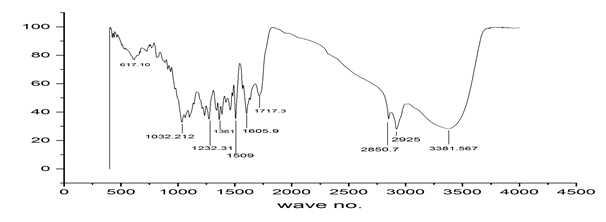
Figure 1: FTIR spectra showing changes in peaks crude plant
methanol extract.
This methanolic extract was then used for the production of
CdS nanoparticles which showed changes in the
FTIR peaks (Figure 2) affirming the generation of the
same. 3406.81 shows presence of aromatic primary
amino N-H stretch, 2919.19, 2850.38 peaks point to
methyl C-H asymmetric stretch, 1590.24 demarcates
the carboxylic acid. Specific to attachment of
cadmium sulfide bond stretching a peak was observed at
562.08.
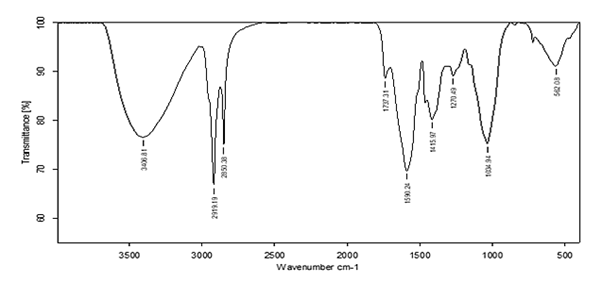
Figure 2: FTIR spectra showing changes in peaks CdS NPs
synthesized from it.
In the first attempt to determine the size of the CdS
nanoparticles malvern zetasizer nano's was used. The
nanoparticles clustering are noticeable apparently due to the
high concentration of nanoparticles loaded in the cuvette.
The DLS in Figure 3 shows size distribution intensity peak at
diameter of 113 nm which could be hydrodynamic intensity
due to aggregation of the particles which is further observed
in the TEM images.
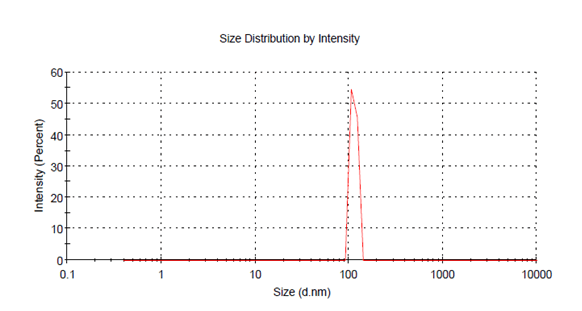
Figure 3: Dynamic light scattering for Cds NPs showing an
intensity peak at 113 nm.
FEGSEM images of the same sample depicts spherical or dot
like morphology of the CdS nanoparticles. In a similar work
presence of oxygen from biogenic CdS was noted when using Chlamydomonas reinhardii as a stabilizing agent. Crystal
structure properties and particle range of the CdS
nanoparticles were studied by HRTEM. It demonstrated that
the nanoparticles are uniformly distributed and appear to be
clustered. The range of CdS particles lie in 5 nm to 10 nm
range. HRTEM indicated single crystalline structure of average particle size in 3 to 5 nm range, and therefore these particles
could also be reviewed as quantum dots (QDs)<10 nm. In
several articles, different QD size ranges have been reported
(from 4 nm to 10 nm). The average size of CdS QDs is about 10
nm as known from SAXS curves because in the higher Q
region (Q>0.07 A-1) where the scattering is dominated by
form factor, the SAXS curves can be modeled using a sphere
form factor of radius 25 nm. CdS size obtained from the SAXS
is the crystal size, which is the smallest and corresponds to
the fact that we have polycrystalline or agglomerated CdS.
Structural analysis as seen in Figure 4.
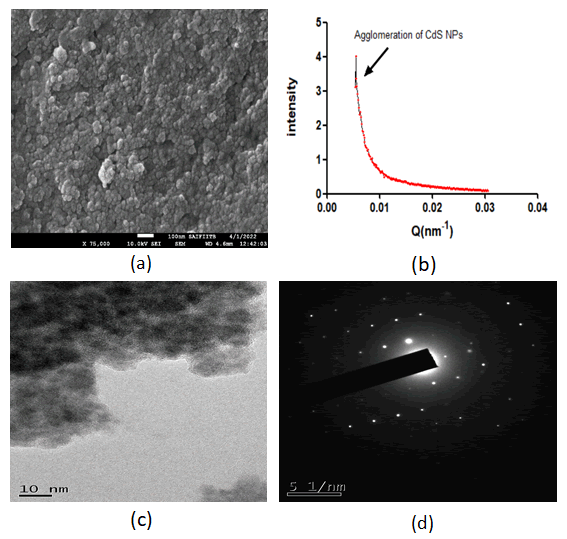
Figure 4: Surface characterization (a) FEGSEM image of CdS
NPs; (b) SAXS spectrum; (c) HRTEM image at 10 nm scale; (d)
TEM diffraction image scale 5 nm-1 nm.
Antibacterial Activity
CdS NPs were investigated for their bactericidal
properties against gram-positive (B. sub ls and S. aureus)
and gram negative (E. coli, S. marcescens) bacteria. Any
clear area around the wells known as zone of inhibition
was observed for both gram positive and gram negative
bacteria. At higher concentration of CdS NPs (20 mg/mL) a
clear zone with 27 mm diameter is observed for S. aureus. In the case of E. coli zone of inhibition was measured
to 20 mm diameter, respectively as seen in Figure 5. These noteworthy results commend that the CdS NPs
performed as a favorable antibacterial agent against both
gram positive and negative bacteria. It can be inferred that
due to the nano dimension of these CdS particles it was
easier for them to penetrate the cell wall of these bacteria
and cause plausible damage.
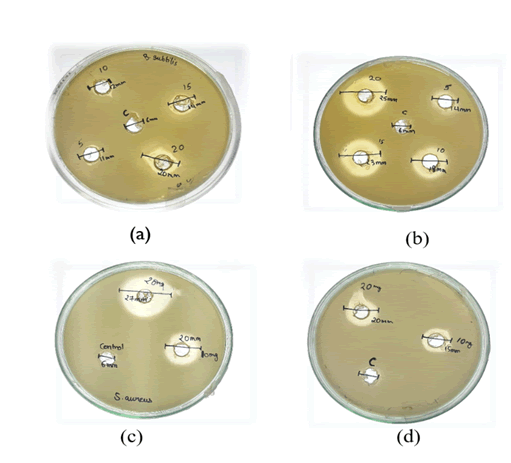
Figure 5: Antibacterial effect of CdS NPs against (a) B. subtilis;
(b) E. coli; (c) S. aureus; (d) S. masercens. DMSO was taken as
control in separate wells.
Cytotoxic activity of CdS nanoparticles by MTT assay: Human
ovarian cancer cell line PA1 and human breast cancer cell line
MDAMB-231 were treated with resulting CdS nanoparticles.
Different concentration of NPs was tested on both cell lines
using the MTT assay. Viability of cells were observed and
calculated over 24 hour timeline. IC50 for CdS NP were noted
as 97.34 μg/ml and 809.75 μg/ml respectively for PA1 and
MDAMB-231 cell line as mentioned in Figure 6. Biogenic CdS
particles probably interacted with the phosphorus moieties in
DNA. This may have led to inactivation of DNA replication
further inhibiting enzyme functions, resulting in loss of
viability.

Figure 6: Cytotoxic effect of CdS NPs on PA1 and MDAMB-231
cells tested for 24 hours.
Apoptosis Assessment
In Figure 7 we observed cell death occurring because of
treatment of cancerous cells with CdS NPs; a significant
increase in AbFlour 488 fluorescence was observed in the
cells treated with CdS NPs in comparison to the untreated
control. Increase in the number of early apoptotic cells from
2.53% to 13.5% in PA1 cell line and 3.67% to 12.6% in
MDAMB-231 cell line was observed. Increase in the late
apoptotic/necrotic population in PA1 was from 1.67% to
5.62% and 1.09% to 19.58% in MDAMB-231 cell line. Cells
with increase in only presidiums fluorescence were
considered to be dead cells. The Annexin V AbFlour 488
fluorescence was collected in the FL1 detector using a 525 nm band pass filter and propidium iodide fluorescence was
collected in the FL3 detector using a 620 nm band pass filter.
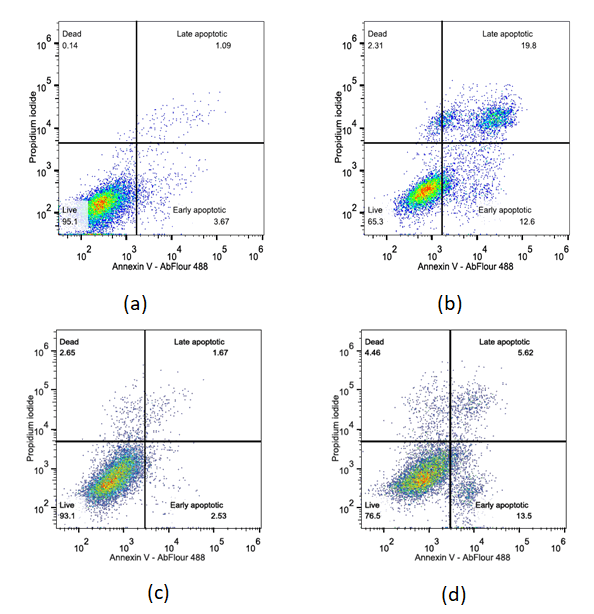
Figure 7: Apoptotic cell death analysis by FACS in
MDAMB-231 (a) Untreated; (b) Cells treated with CdS NPs and
PA1; (c) Untreated; (d) Cells treated with CdS NPs. Apoptotic
cells are seen in top and bottom right quadrant showing early
and late apoptosis.
Cell Cycle Analysis by Flow Cytometry
FACS or Fluorescence activated cell sorting was employed to
calculate the cells/DNA count in different stages of the cell
cycle such as G0/G1/S and G2/M. Propidium iodide
fluorescence was collected in the FL3 detector using a 620
nm band pass filter. As observed in Figure 8 PA1 cell line
when treated with IC50 concentration of CdS NPs showed
significant increase in the cells in G2/M phase of cell cycle
with decrease of cells in G0/G1 phase in comparison to
the untreated control which suggests an arrest in G2/M
stages of the cell cycle. It was also noted that an increase
in cells with DNA damage in subg1 cells was present. For
G0/G1 phase, the cell tally in untreated cells was of 40.6%
and gradually plummeted to 28.4% under CdS NPs
treatment. Increase in the cells of MDAMB-231 in G0/G1 phase of cell cycle from 61.7% to 66.0% with diminishing
cells in G2/M phase from 16.7% to 11.7% was observed in
the nanoparticle treated sample as compared to the control
sample; which suggests an arrest in G0/G1 stages of the cell
cycle.
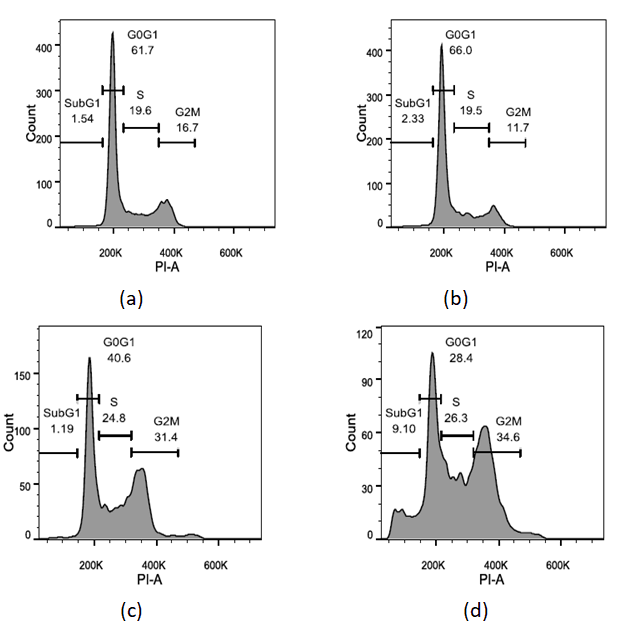
Figure 8: Cell cycle arrest analyzed by flow cytometry (a)
Control (untreated) MDAMB-231 and CdS NPs at; (b) For
MDAMB-23; (c) Untreated PA1; (d) CdS NPs treated PA1 cells.
Conclusion
As the world is progressing there are many drugs that are
getting available for targeting cancer. Huge amount of work
and energy is getting involved to find an appropriate and
aggressive drug that could cure cancer or maybe just weaken
its jeopardy to human race. These common cancer drugs are
so aggressive in nature that they cause innumerable appalling
side effects. It’s because of these spinoffs scientists are
looking into ways that could target cancer and have minimal
negative effects on patients. Berberis sp extract can be an
intelligible alternative that bears positive effects on people
suffering from this disease. The availability of more specific
herbal medicine should be more useful to prevent or treat
cancer. Berberis has various benefits other than treating
cancer. The positive effects of the extract on cells of the
human body can help the recovery of a patient as a whole. It is
an unconventional approach. Thus, researchers are
encouraged via this review to conduct more research in this
field and give credible verification suggesting the use of Berberis plant extract in oncology [17-23].
Conflict of Interest
We wish to draw the attention of the editor to the following
facts that there are no potential conflicts of interest and to
significant financial contributions to this work.
Funding
NA
Ethical Compliance
This article does not contain any studies involving human or
animal subjects performed by any of the authors.
References
- Bahuguna A, Khan I, Bajpai VK, Kang SC (2017) MTT assay to evaluate the cytotoxic potential of a drug. Bangladesh J Pharmacol. 12(2):115-118.
[Crossref] [Google Scholar]
- Balachandran P, Govindarajan R (2005) Cancer-an ayurvedic perspective. Pharmacol Res. 51:19-30.
[Crossref] [Google Scholar] [PubMed]
- Bendale Y, Bendale V, Paul S (2017) Evaluation of cytotoxic activity of platinum nanoparticles against normal and cancer cells and its anticancer potential through induction of apoptosis. Integr Med Res. 6:141-148.
[Crossref] [Google Scholar] [PubMed]
- Bhatnagar A, Saini R, Dagar P, Mishra A (2022) Molecular modelling and in vitro studies of daruharidra as a potent alpha-amylase inhibitor. J Biomol Struct Dyn 12:1-12.
[Crossref] [Google Scholar] [PubMed]
- Borek C (2004) Dietary antioxidants and human cancer. Integr Cancer Ther. 3:333–341.
[Crossref] [Google Scholar] [PubMed]
- Chandra H, Patel D, Kumari P (2019) Phyto-mediated synthesis of zinc oxide nanoparticles of Berberis aristata: Characterization, antioxidant activity and antibacterial activity with special reference to urinary tract pathogens. Mater Sci Eng C. 102:212-220.
[Crossref] [Google Scholar] [PubMed]
- Darzynkiewicz Z, Bedner E, Smolewski P (2001) Flow cytometry in analysis of cell cycle and apoptosis. Semin Hematol. 38:179-193.
[Crossref] [Google Scholar] [PubMed]
- Han HS, Koo SY, Choi KY (2022) Emerging nanoformulation strategies for phytocompounds and applications from drug delivery to phototherapy to imaging. Bioact Mater. 14(1):182–205.
[Crossref] [Google Scholar] [PubMed]
- Kainsa S, Kumar P, Rani P (2012) Medicinal plants of Asian origin having anticancer potential: Short review. Asian J Biomed Pharm Sci. 2:1-7.
[Google Scholar] [PubMed]
- Kaur R, Kapoor K, Kaur H (2011) Plants as a source of anticancer agents. 1(2):119-124.
[Crossref] [Google Scholar]
- Ko JKS, Leung WC, Ho WK, Chiu P (2007) Herbal diterpenoids induce growth arrest and apoptosis in colon cancer cells with increased expression of the nonsteroidal anti-inflammatory drug activated gene. Eur J Pharmacol. 559:1-13.
[Crossref] [Google Scholar] [PubMed]
- Koopman G, Reutelingsperger CP, Kuijten GA (1994) Annexin V for flow cytometric detection of phosphatidylserine expression on B cells undergoing apoptosis. Blood 84:1415-1420.
[Crossref] [Google Scholar] [PubMed]
- Kumar A, Singh KR, Ghate MD (2022) Bioinspired quantum dots for cancer therapy: A mini-review. Mater Lett. 313:131742.
[Crossref] [Google Scholar]
- Lamichhane B, Adhikari S, Shrestha P, Shrestha GB (2014) Study of phytochemical, antioxidant, antimicrobial and anticancer activity of Berberis aristata. J Trop Life Sci. 4(1):01-07.
[Google Scholar]
- Liu C, Xiao P, Liu G (1991) Studies on plant resources, pharmacology and clinical treatment with berbamine. Phyther Res. 5:228-230.
[Crossref] [Google Scholar]
- Meng Z, Li T, Ma X (2013) Berbamine inhibits the growth of liver cancer cells and cancer initiating cells by targeting Ca2+/calmodulin dependent protein kinase II. Mol Cancer Ther. 12(10):2067-2077.
[Crossref] [Google Scholar] [PubMed]
- Nakatani N (2000) Phenolic antioxidants from herbs and spices. BioFactors. 13(4):141-146.
[Crossref] [Google Scholar] [PubMed]
- Pozarowski P, Darzynkiewicz Z (2004) Analysis of cell cycle by flow cytometry. Methods Mol Biol. 281(1):301–311.
[Google Scholar]
- Radnia F, Mohajeri N, Zarghami N (2020) New insight into the engineering of green carbon dots: Possible applications in emerging cancer theranostics. Talanta 209:120547.
[Crossref] [Google Scholar]
- Rao MD, Pennathur G (2017) Green synthesis and characterization of cadmium sulphide nanoparticles from Chlamydomonas reinhardtii and their application as photocatalysts. Mater Res Bull 85(1):64-73.
[Crossref] [Google Scholar]
- Scudiero DA, Shoemaker RH, Paull KD (1988) Evaluation of a soluble tetrazolium/formazan assay for cell growth and drug sensitivity in culture using human and other tumor cell lines. Cancer Res. 48(17):4827-4833.
[Google Scholar] [PubMed]
- Shivaji K, Mani S, Ponmurugan P (2018) Green synthesis derived cds quantum dots using tea leaf extract: Antimicrobial, bioimaging, and therapeutic applications in lung cancer cells. ACS Appl Nano Mater 1:1683-1693.
[Crossref] [Google Scholar]
- Tavakoli J, Miar S, Zadehzare MM, Akbari H (2012) Evaluation of effectiveness of herbal medication in cancer care: A review study. Iran J Cancer Prev. 5(3):144-156.
[Google Scholar] [PubMed]
Citation: Bhatnagar A, Mishra A (2023) Biogenic Synthesis of Cadmium Sulfide Nanoparticles Using Daruharidra (Berberis
aristata) and Its Implementation as a Novel Therapeutic Agent against Human Breast and Ovarian Cancer. J Pharm Pharm
Res. 7:012.
Copyright: © 2023 Bhatnagar A, et al. This is an open-access article distributed under the terms of the Creative Commons
Attribution License, which permits unrestricted use, distribution, and reproduction in any medium, provided the original
author and source are credited.
